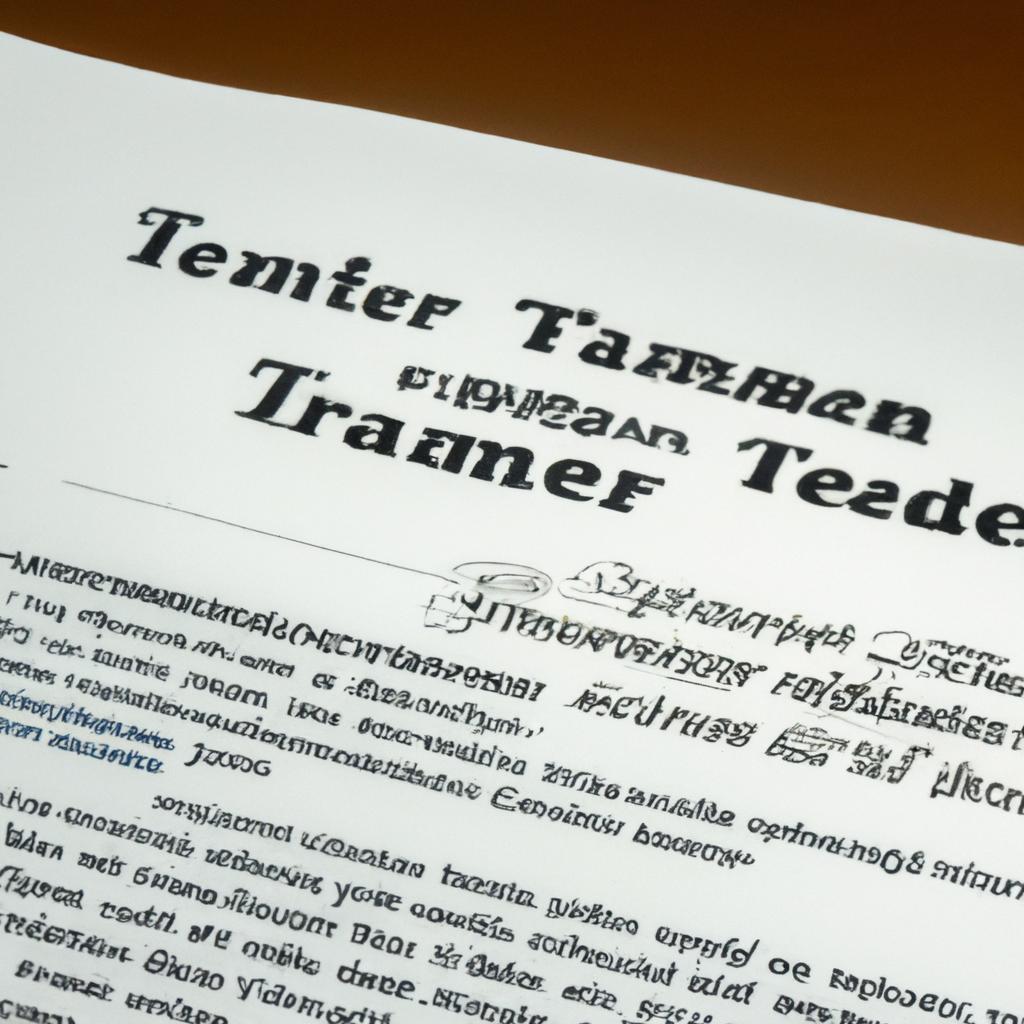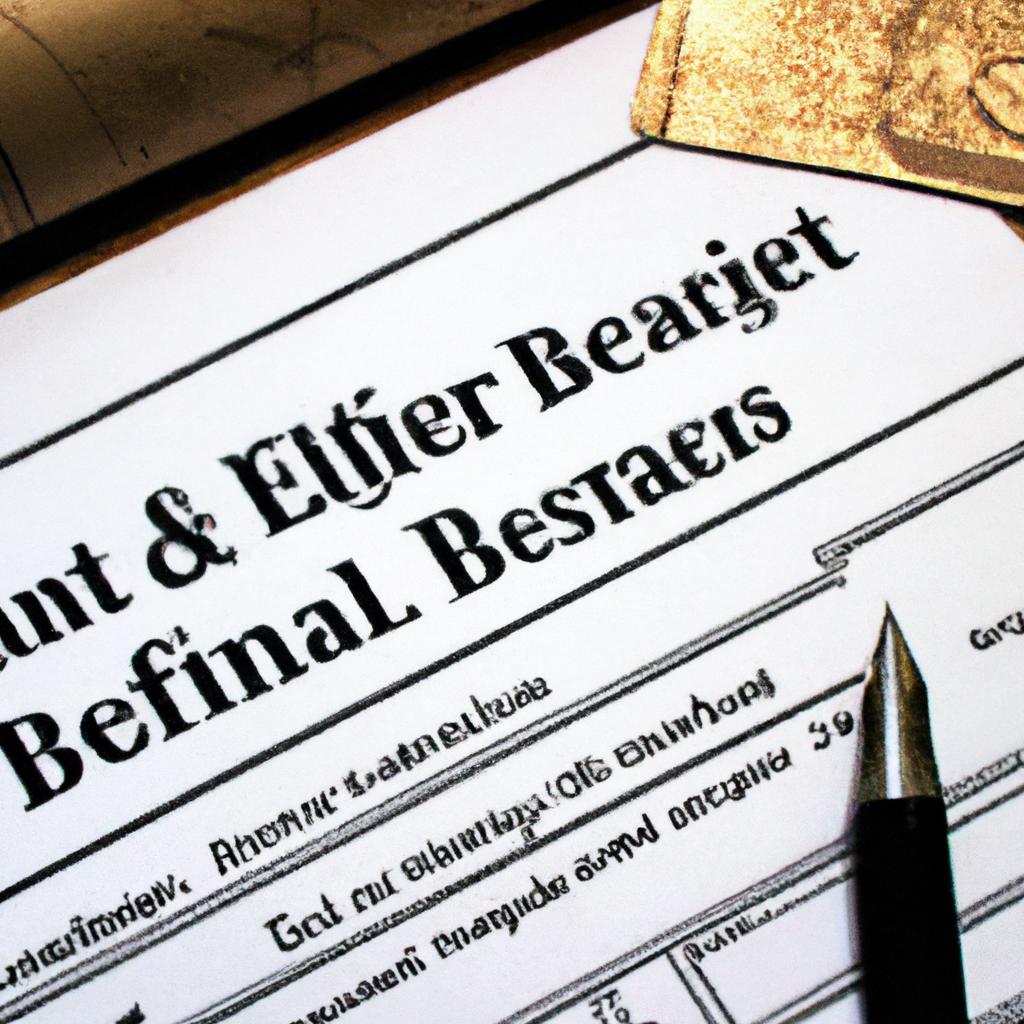Have you considered the benefits of a transfer on death document in your estate planning strategy? As experienced attorneys at Morgan Legal Group in New York City, we specialize in helping individuals secure their assets and ensure their wishes are carried out after they pass away. In this article, we will delve into the intricacies of transfer on death documents and how they can play a crucial role in your overall estate plan. Join us as we explore the importance of this often overlooked legal tool and how it can provide peace of mind for you and your loved ones.
Understanding the Significance of a Transfer on Death Document
The transfer on death document is a legal instrument that allows individuals to designate beneficiaries to receive their assets upon their death. This document is commonly used for bank accounts, investment accounts, and real estate. By designating beneficiaries in a transfer on death document, individuals can avoid the lengthy probate process and ensure a smooth transfer of assets to their loved ones.
It is important to understand the significance of a transfer on death document in estate planning. This document allows individuals to have control over who will inherit their assets and can help avoid disputes among family members. Additionally, a transfer on death document can provide privacy for the individuals involved, as assets transferred through this document do not go through the public probate process. Consult with an experienced estate planning attorney to ensure that your transfer on death document is properly drafted and executed to meet your specific needs and goals.

Key Benefits of Incorporating a Transfer on Death Document into Your Estate Planning Strategy
By incorporating a transfer on death document into your estate planning strategy, you can enjoy several key benefits that will provide peace of mind for you and your loved ones:
- Avoid Probate: A transfer on death document allows your assets to pass directly to your designated beneficiaries upon your passing, bypassing the lengthy and costly probate process.
- Privacy: Unlike a will, which becomes public record after probate, a transfer on death document allows for a private transfer of assets without the need for court involvement.
Furthermore, a transfer on death document can help streamline the distribution of your assets and ensure that your wishes are carried out efficiently and according to your exact specifications.

Expert Recommendations for Drafting a Comprehensive Transfer on Death Document
To ensure that your assets are transferred smoothly and efficiently to your chosen beneficiaries upon your passing, it is crucial to draft a comprehensive Transfer on Death Document. Below are expert recommendations to guide you through this process:
- Identify your assets: Make a thorough inventory of all your assets, including real estate, bank accounts, investments, and personal belongings.
- Choose your beneficiaries: Decide who will inherit your assets and specify their relationship to you in the document.
- Designate a successor beneficiary: In case your primary beneficiary predeceases you, designate a secondary beneficiary to ensure your assets are distributed according to your wishes.
| Asset | Beneficiary |
|---|---|
| House | John Smith |
| 401(k) | Sarah Johnson |
| Jewelry | Amy Brown |
Review and update regularly: Periodically review your Transfer on Death Document to ensure it reflects your current assets and beneficiaries. Life changes, such as marriages, divorces, births, and deaths, may require modifications to the document. Consulting with an estate planning attorney can help you navigate these changes effectively.

Ensuring Smooth Transfer of Assets with a Well-Crafted Transfer on Death Document
When it comes to estate planning, ensuring a smooth transfer of assets is essential. A well-crafted transfer on death document can provide peace of mind by clearly outlining how your assets will be distributed upon your passing. By designating beneficiaries in advance, you can help avoid confusion and potential disputes among heirs.
With a transfer on death document, you can specify who will inherit specific assets, such as real estate, bank accounts, or investments. This legal document allows you to bypass probate court, saving time and money for your loved ones. By working with an experienced estate planning attorney, you can ensure that your wishes are carried out effectively and efficiently.
Q&A
Q: What is a transfer on death document?
A: A transfer on death document is a legal instrument that allows an individual to designate beneficiaries to inherit their assets upon their death without the need for probate.
Q: What types of assets can be covered by a transfer on death document?
A: Transfer on death documents can cover a wide range of assets, including real estate, bank accounts, investment accounts, and even vehicles.
Q: How does a transfer on death document differ from a will?
A: While both serve to distribute assets upon death, a transfer on death document bypasses the probate process and allows assets to be transferred directly to beneficiaries, whereas a will must go through probate.
Q: Are transfer on death documents legally binding?
A: Yes, transfer on death documents are legally binding as long as they meet the requirements set forth by state law.
Q: Can a transfer on death document be revoked or changed?
A: Yes, a transfer on death document can typically be revoked or changed at any time by the individual who created it.
Q: Is a transfer on death document a good estate planning option?
A: Transfer on death documents can be a useful tool for estate planning, particularly for individuals looking to avoid probate and simplify the distribution of their assets. However, they may not be suitable for all situations, so it’s best to consult with a qualified estate planning attorney to determine the best approach for your specific needs.
Final Thoughts
In conclusion, transfer on death documents can be an effective way to ensure that your assets are passed on to your chosen beneficiaries without the need for probate. By designating beneficiaries for specific assets, you can streamline the transfer process and provide peace of mind for you and your loved ones. Consider discussing this option with a legal professional to see if it is the right choice for your estate planning needs. Thank you for reading and may your planning be as seamless as the transfer on death process itself.
 Transfer on Death Document: A Comprehensive Guide
Transfer on Death Document: A Comprehensive Guide
Have you ever wondered what happens to your assets after you pass away? Many people don’t like thinking about this grim topic, but it’s crucial to have a plan in place to ensure that your loved ones are taken care of and your assets are distributed according to your wishes. One way to protect your assets is through a transfer on death document (TOD). In this article, we’ll delve into what a TOD document is, how it works, and why you should consider implementing one in your estate planning.
What is a Transfer on Death Document?
A transfer on death document, also known as a TOD or beneficiary deed, is a legal document that designates who will receive your assets after your death. Unlike a traditional will, a TOD document bypasses the probate process, which is a court-supervised process of distributing a deceased individual’s assets. Instead, your assets will be transferred directly to the designated beneficiaries, without the need for court intervention.
How Does a Transfer on Death Document Work?
A TOD document is relatively straightforward and can be created by almost anyone. Here’s how it works:
1. Identify Your Assets: The first step to creating a TOD document is to identify the assets that you want to designate beneficiaries for. This can include bank accounts, investments, real estate, and other valuable possessions.
2. Choose Your Beneficiaries: Next, you’ll need to choose who will receive your assets after your death. This can be anyone, including family members, friends, or even charitable organizations.
3. Draft the TOD Document: Once you’ve identified your assets and beneficiaries, it’s time to create the TOD document. This is a legal document that must be created in accordance with state laws. It’s advisable to seek the guidance of an estate planning attorney to ensure that your TOD is legally valid.
4. Sign and Notarize the Document: After drafting the TOD document, you’ll need to sign it in the presence of a notary. This is a crucial step, as a TOD document that hasn’t been properly notarized may be deemed invalid.
5. Keep the Document in a Safe Place: Once the TOD document is signed, it’s important to keep it in a safe place, such as a fireproof safe or a safety deposit box. You should also inform your designated beneficiaries of the existence of the document and where it can be found.
6. Update the Document When Necessary: It’s essential to review your TOD document periodically and make updates as needed. Major life events, such as marriage, divorce, or the birth of a child, may warrant changes to your designated beneficiaries.
Benefits and Practical Tips
Now that you understand the basics of a TOD document, let’s explore the benefits and some practical tips for implementing one in your estate planning.
Benefits:
1. Avoid Probate: As mentioned earlier, the primary benefit of a TOD document is that it bypasses the probate process. This means that your assets can be transferred directly to your beneficiaries without the need for court proceedings, saving time and money.
2. Privacy: Unlike a will, which becomes a matter of public record during the probate process, a TOD document is a private agreement between you and your beneficiaries. This means that your assets and their distribution will remain confidential.
3. Flexibility: TOD documents can be modified or revoked at any time by the transferor, granting them flexibility to change their beneficiaries or assets as needed.
Practical Tips:
1. Keep Your Beneficiary Designations Updated: It’s crucial to review and update your designated beneficiaries regularly. Failing to do so may result in your assets being transferred to someone you no longer wish to receive them.
2. Consult an Attorney: While TOD documents can be created without the help of an attorney, it’s advisable to seek professional guidance to ensure that your TOD document meets all legal requirements.
Case Studies:
To further understand the benefits of a TOD document, let’s look at some real-life examples.
Case Study 1: John, a widower with two children, wants to ensure that his assets are evenly distributed between them after his death. He creates a TOD document designating his son and daughter as equal beneficiaries. After John’s death, his assets are directly transferred to his children without any complications or delays. Had John named only one child as a beneficiary in his TOD document, the other child may have contested the will in court, causing delays and family disputes.
Case Study 2: Mary and her husband, Mike, own a house together as joint tenants with rights of survivorship. Mike passes away, and the house automatically transfers to Mary as the surviving spouse. However, Mary wants to ensure that their house is passed on to her grandchildren after her death. She adds a TOD clause to the property, designating her grandchildren as beneficiaries. After her death, the house is transferred to her grandchildren without the need for going through probate.
First-Hand Experience:
Many people who have implemented a TOD document in their estate planning have had positive experiences. They’ve found the process to be relatively simple and cost-effective, and they have peace of mind knowing that their assets will be distributed to their intended beneficiaries without any hassle.
In Conclusion:
A transfer on death document is a useful tool for anyone looking to ensure that their assets are distributed according to their wishes without going through the probate process. It’s a flexible and cost-effective option for estate planning and can provide peace of mind for you and your loved ones. If you’re interested in creating a TOD document, consult an estate planning attorney to ensure that your document meets all legal requirements.






